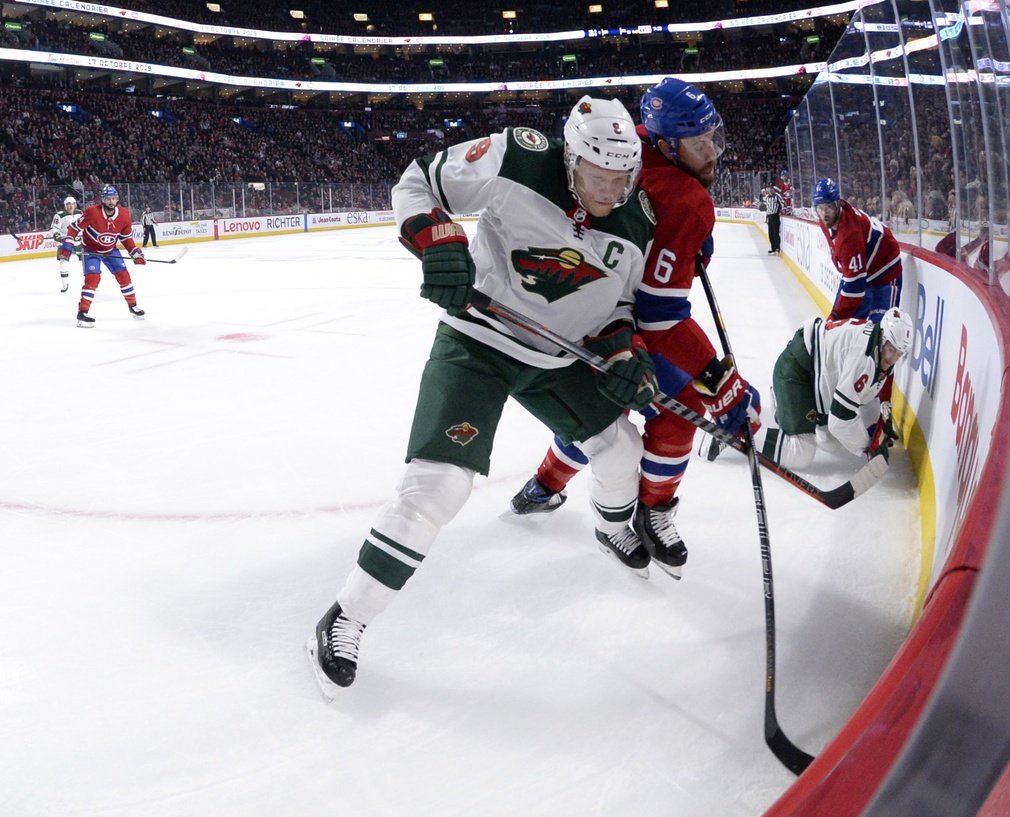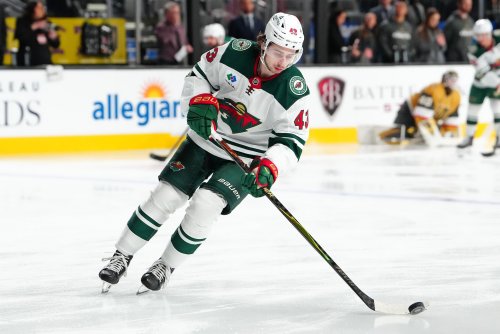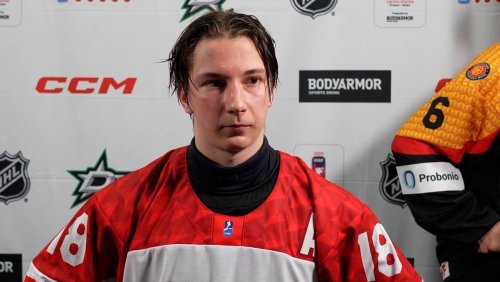
The Minnesota Wild have yet to show up for the 2019-20 season. A 1-6 record, two points in the standings a goal differential of 14-29 is not exactly the first impression a team wants to make on a new general manager. The most recent loss, a 4-0 drubbing at the hands of the Montreal Canadiens, forced a players-only closed-door meeting following the game.
This is where the Wild are at. Multiple areas have plagued this team at one point or another. A lot can be said of the defensive zone coverage. Others can point directly at the failure of Devan Dubnyk in the goal crease. Right now, there's no wrong answer. It's been a total system failure. One carryover from last season, though, has been the lack of offense.
The Wild's Goals For Average has been trending downward going back to last season. In the first 36 games, Minnesota scored 2.85 goals on average. The final 46 games, it dropped to 2.22 goals for per game.
Why that split? That was the day Nino Niederreiter was traded for Victor Rask and the start of core-altering moves by then-GM Paul Fenton. The subsequent trades of Charlie Coyle and Mikael Granlund for younger, still-unproven talent has not shown to be a net gain in the goal scoring category.
Fast-forward to this season and the goal scoring is still on a downward trend. Through seven games, the Wild have mustered a measly 2.00 Goals For Average. The offense has gone dry. Any offense the Wild have been able to create has been primarily run through the defensemen. Brad Hunt, Ryan Suter and Jared Spurgeon are the team leaders in points -- all tied with four. Marcus Foligno breaks into the top four as the only forward with more than two points thanks to his three assists.

This trend is ever visible in the chart above from HockeyViz.com. The defensemen are getting the shots from the point, and the area below the faceoff circles is mostly barren. Simply put, the Wild forwards haven't found the slot and the top of the goal crease - the dangerous scoring areas - frequently enough. A team isn't going to score many goals if they are unable, or worse, unwilling to go to the high-percentage scoring areas of the ice.
The forwards must engage into the season like Maverick in the film Top Gun. Before goals can be scored, Wild forwards need to focus on shooting the puck. Zach Parise's 6.28 shots per 60 at 5-on-5 is almost a full three shots per game less than his three-year average of 9.23 shots per 60. Jason Zucker's 6.86 is down from his three-year norm of 9.06 shots per 60 at 5-on-5. Eric Staal is at 4.32, down from 8.77. Fiala is down. Jordan Greenway is down from an already low average. Joel Eriksson Ek is down.
You get the picture.
The only forwards that have improved upon their average shots per 60 at 5-on-5 are Luke Kunin and Foligno. Both are, not surprisingly, leading the team in goals (Kunin tied first with two goals), or points (Foligno with three points [assists]) at 5-on-5.
The more troubling part of this trend is not that the Fialas, Donatos, Greenways or Eriksson Eks of the team aren't producing. Though, if they were, this team likely wouldn't be in the predicament they're in. It's the veterans on the Wild that haven't produced. Zach Parise, Mikko Koivu, Eric Staal, the guys making big money, haven't shown up. Add to that group Ryan Suter, Mats Zuccarello and Jared Spurgeon. That group is nowhere to be found, and it's a substantial part of the Wild's offense.
Lastly, the lack of offense has a trickle down effect on just about every aspect of the team. Going back to the Top Gun analogy, Ice Man could only play defense for so long before he too would have been shot out of the sky. Bruce Boudreau recognizes the fact that the team can't score. He is trying to make adjustments along the way. Trying to make the team better defensively, though, could come at the expense of creating more offense. It could cause the puck to be in the defensive zone more frequently, making the likelihood of a defensive breakdown increase. That forces the goaltenders to be absolutely on top of their game. The problem is that Dubnyk isn't anywhere close to his 2015-18 form where he was a top-three goaltender in the league. Couple that with Alex Stalock's career of being barely average for a back-up, and the recipe for winning isn't going to be solved with more defense.
The path out of this hole the Wild have dug themselves starts and ends with offense. It starts with the forward lines shooting the puck more. It starts with getting traffic in front of the net. The forward lines need to be more disruptive around the crease. With the forwards picking up their share of the offensive load, it should help to free up shots from the point.
And that should trickle down to every other aspect of the team as well.
Stats courtesy of ESPN.com, Evolving-Hockey.com, and Hockey-Reference.com
Think you could write a story like this? Hockey Wilderness wants you to develop your voice, find an audience, and we'll pay you to do it. Just fill out this form.






Recommended Comments
There are no comments to display.
Join the conversation
You can post now and register later. If you have an account, sign in now to post with your account.
Note: Your post will require moderator approval before it will be visible.